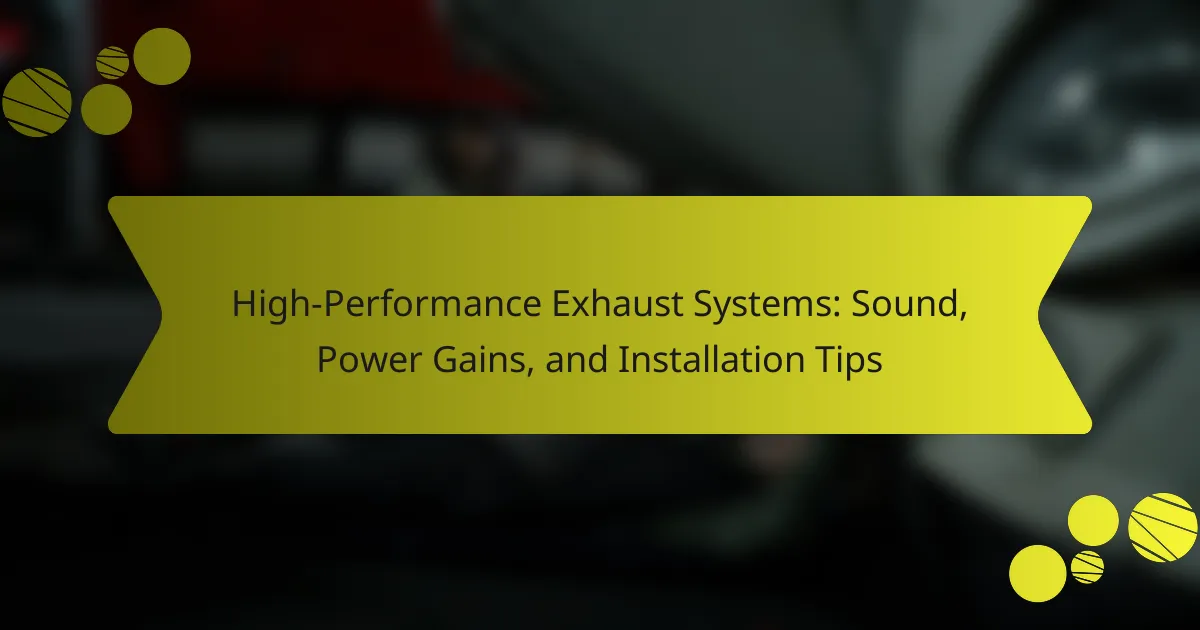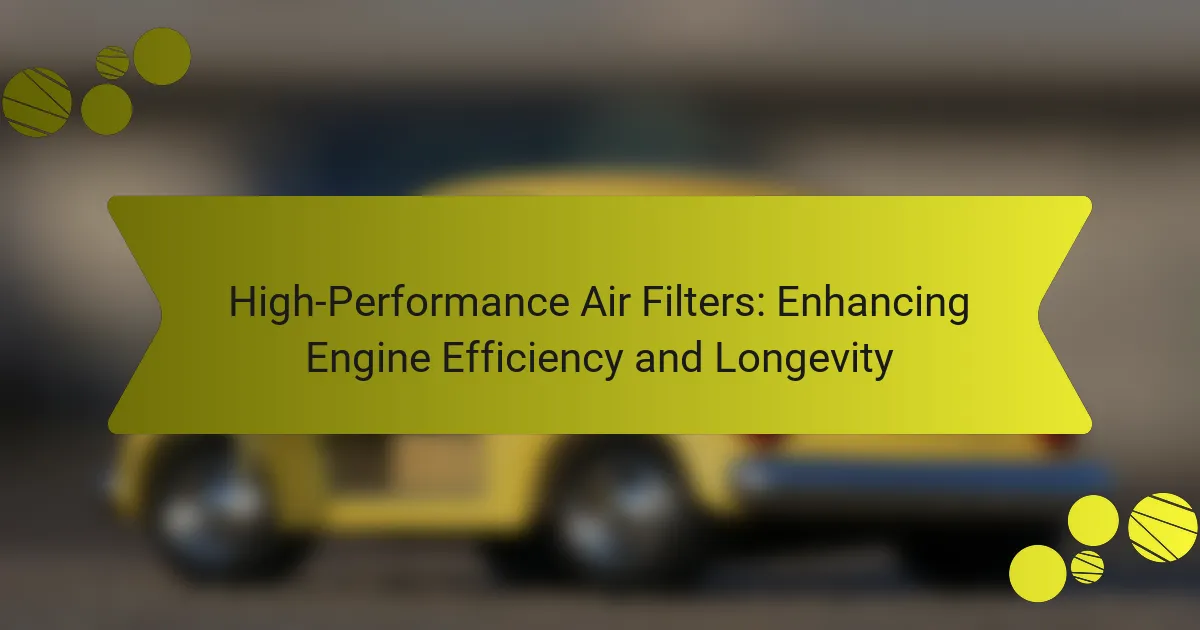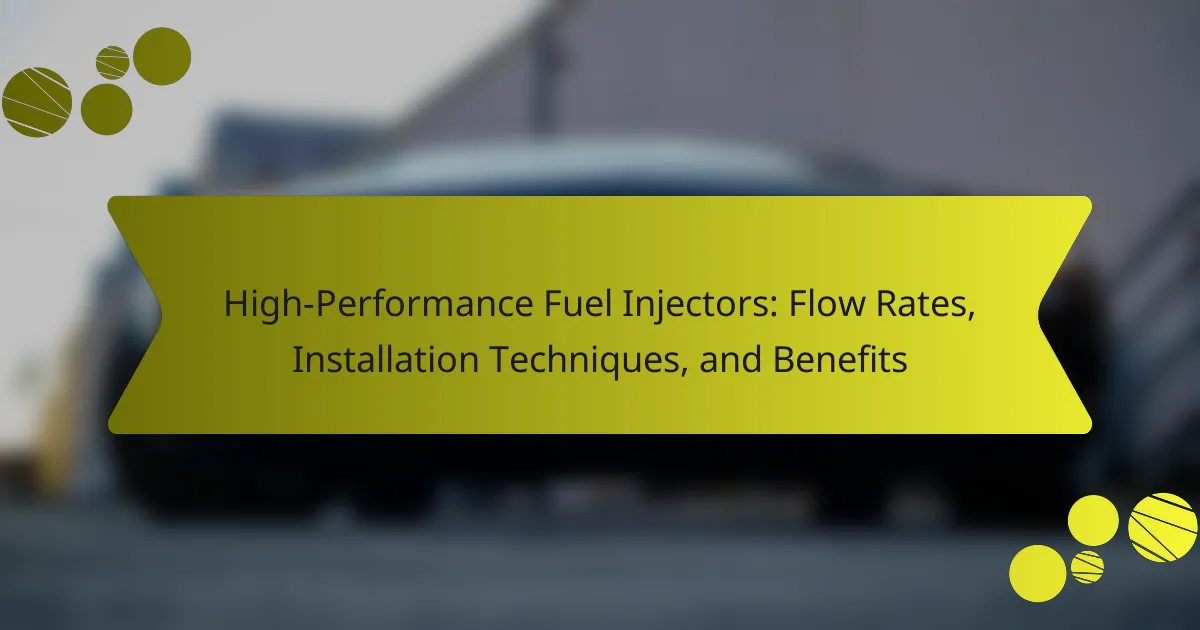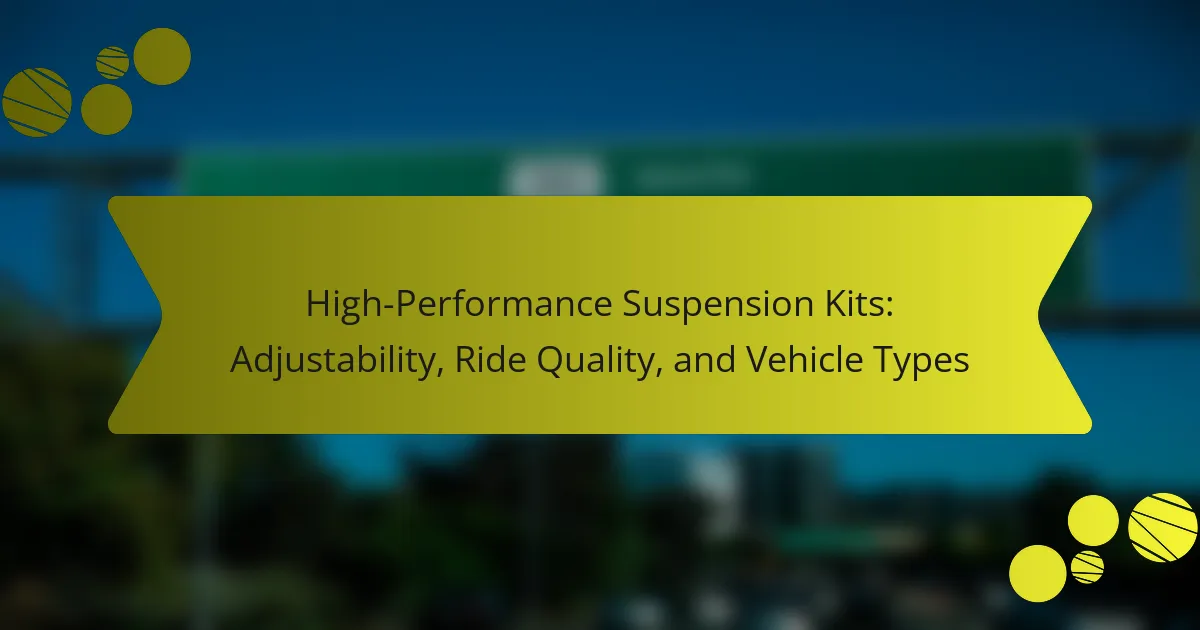High-performance exhaust systems enhance sound, boost power, and improve vehicle efficiency. They optimize exhaust flow, allowing engines to breathe better and achieve power gains of 5% to 20%. This article covers materials used, installation tips, vehicle-specific considerations, and compliance with emissions regulations. Regular maintenance is crucial for optimal performance and longevity.

What are the key benefits of high-performance exhaust systems?
High-performance exhaust systems provide significant benefits, including enhanced sound, increased power, and improved vehicle efficiency. These systems optimize exhaust flow, reducing back pressure and allowing engines to breathe better. As a result, users often experience power gains ranging from 5% to 20%, depending on the vehicle and system design. Additionally, many high-performance exhaust systems feature lightweight materials, contributing to overall weight reduction and better handling. Installation typically requires minimal modifications, making it accessible for most enthusiasts.
How do high-performance exhaust systems enhance engine power?
High-performance exhaust systems enhance engine power by improving exhaust flow and reducing back pressure. This allows the engine to expel gases more efficiently, resulting in increased horsepower and torque. Additionally, these systems often feature lighter materials, contributing to overall vehicle performance. Enhanced sound quality also provides a sportier driving experience.
What impact do exhaust systems have on vehicle sound?
High-performance exhaust systems significantly enhance vehicle sound by altering exhaust flow dynamics. They typically produce a deeper, more aggressive tone, appealing to enthusiasts. The sound quality varies based on design elements like pipe diameter and muffler type. Upgrading to these systems can also improve engine performance, providing power gains alongside enhanced acoustics.
How can exhaust systems improve fuel efficiency?
High-performance exhaust systems improve fuel efficiency by optimizing engine airflow, reducing back pressure, and enhancing combustion. These systems often feature larger diameter pipes and high-flow mufflers, allowing exhaust gases to exit more freely. As a result, engines can operate more efficiently, leading to better fuel economy. Additionally, the improved sound profile can enhance the driving experience.
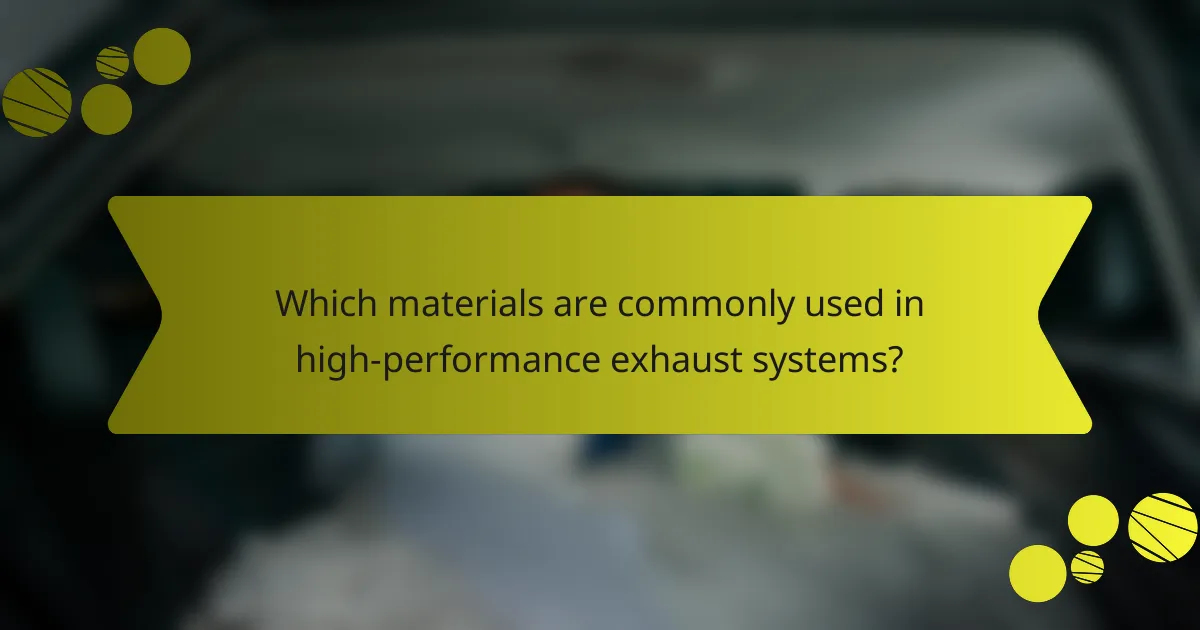
Which materials are commonly used in high-performance exhaust systems?
High-performance exhaust systems commonly use materials such as stainless steel, titanium, aluminized steel, and carbon fiber. Stainless steel offers durability and corrosion resistance, while titanium is lightweight and provides excellent heat resistance. Aluminized steel is cost-effective and offers decent performance, whereas carbon fiber is favored for its lightweight properties and aesthetic appeal. Each material contributes uniquely to sound, power gains, and overall system efficiency.
What are the advantages of stainless steel exhaust systems?
Stainless steel exhaust systems offer durability, corrosion resistance, and improved performance. They enhance exhaust flow, resulting in better engine efficiency and power gains. Additionally, these systems often produce a more appealing sound compared to other materials. Their lightweight nature simplifies installation and reduces overall vehicle weight.
How does titanium compare to other materials in exhaust systems?
Titanium offers superior strength-to-weight ratio compared to materials like stainless steel and mild steel in exhaust systems. It is lighter, which enhances vehicle performance by reducing overall weight. Additionally, titanium exhibits excellent resistance to corrosion, prolonging the lifespan of exhaust components. In terms of sound, titanium can produce a distinct, aggressive tone that appeals to performance enthusiasts. However, it is more expensive and requires specialized installation techniques. Overall, titanium stands out for high-performance applications, balancing weight savings, durability, and sound quality effectively.

What installation considerations should be taken into account for exhaust systems?
When installing high-performance exhaust systems, consider factors like compatibility, clearance, and mounting points. Proper alignment ensures optimal sound and power gains. Additionally, check for emissions regulations to maintain compliance. Using high-quality materials enhances durability and performance.
How do you choose the right exhaust system for your vehicle?
To choose the right exhaust system for your vehicle, prioritize sound preference, power gains, and ease of installation. Consider the material type, such as stainless steel for durability, and ensure compatibility with your vehicle’s make and model. Research performance metrics like horsepower increase and torque enhancement. Evaluate installation complexity, as some systems require professional assistance while others are DIY-friendly.
What tools are needed for DIY exhaust system installation?
To install a DIY exhaust system, you need essential tools for effective assembly. Key tools include a socket set, wrenches, a jack and jack stands, exhaust pipe cutter, and safety gear. These tools ensure precision and safety during installation, enhancing the overall performance of high-performance exhaust systems.
What are common mistakes during installation to avoid?
Common mistakes during installation include improper alignment, neglecting to check for leaks, and using incorrect tools. Ensuring a proper fit is crucial for maximizing sound and power gains. Additionally, overlooking the need for proper gaskets can lead to exhaust leaks, reducing performance. Always consult the manufacturer’s guidelines for torque specifications to avoid over-tightening, which can damage components.
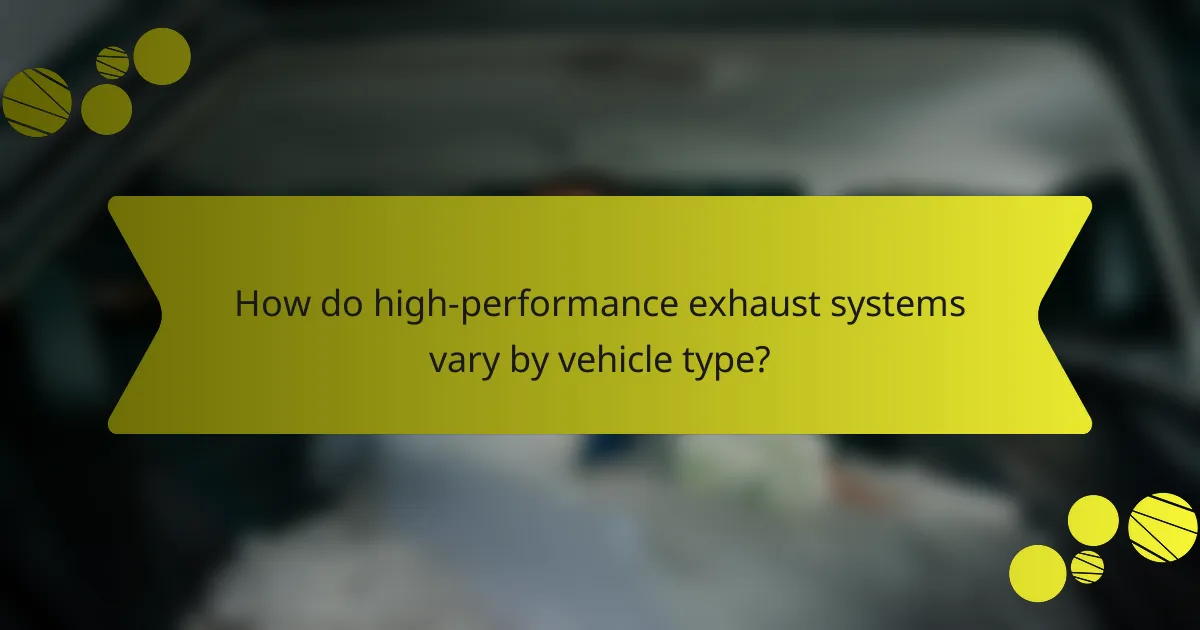
How do high-performance exhaust systems vary by vehicle type?
High-performance exhaust systems vary significantly by vehicle type due to differences in engine design, intended use, and performance goals. Sports cars typically prioritize sound and power gains, often featuring straight pipes and high-flow catalytic converters. Trucks may focus on torque and durability, utilizing larger diameter pipes and robust materials. Additionally, luxury vehicles often balance sound enhancement with noise reduction technologies to maintain comfort. Each vehicle type requires specific installation techniques to optimize performance and fitment.
What are the unique considerations for sports cars?
High-performance exhaust systems for sports cars enhance sound, power, and installation efficiency. Unique considerations include material choice, system design, and compatibility with existing components.
1. Material choice affects weight and durability. Stainless steel and titanium are popular for their strength and resistance to corrosion.
2. System design influences sound quality. Cat-back systems often provide a deeper tone, while headers can increase power output.
3. Compatibility with existing components ensures optimal performance. Custom installations may be necessary for non-standard vehicles.
4. Professional installation is recommended for complex systems to ensure proper fit and function.
How do exhaust systems differ for trucks and SUVs?
Exhaust systems for trucks and SUVs differ primarily in design and performance characteristics. Trucks typically feature larger diameter pipes for enhanced power and torque, while SUVs often prioritize sound and emissions compliance. Trucks may utilize more robust materials to withstand heavier loads, whereas SUVs focus on weight reduction for better fuel efficiency. Additionally, trucks may have more options for off-road performance, while SUVs often include features aimed at comfort and noise reduction.

What are the regulatory considerations for high-performance exhaust systems?
High-performance exhaust systems must comply with emissions regulations and noise standards. Regulatory considerations include local laws, state emissions testing, and federal guidelines. For instance, systems may need to meet specific decibel levels to avoid fines. Additionally, modifications can affect warranty coverage and vehicle legality on public roads. Understanding these regulations ensures performance upgrades are both effective and compliant.
How do emissions standards affect exhaust system choices?
Emissions standards significantly influence exhaust system choices by dictating design and performance parameters. High-performance exhaust systems must balance sound enhancement and power gains while adhering to regulations. For example, systems may utilize specific materials or configurations to reduce emissions without sacrificing performance. As a result, manufacturers often innovate to meet these standards, leading to unique designs that can optimize engine efficiency while maintaining compliance.
What modifications are permissible under local laws?
Local laws typically allow modifications to high-performance exhaust systems, provided they meet sound and emissions regulations. Compliance with these regulations is essential to avoid fines and ensure vehicle legality. Always check specific local ordinances for detailed requirements.
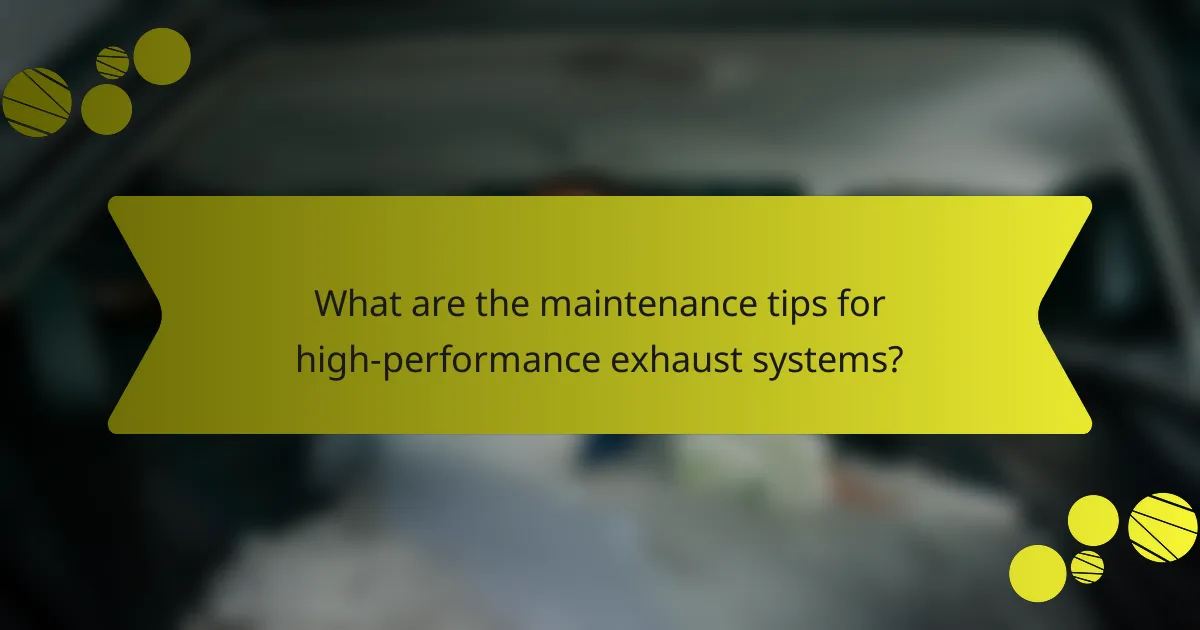
What are the maintenance tips for high-performance exhaust systems?
Regular maintenance ensures high-performance exhaust systems operate optimally. Inspect and clean components every few months to prevent buildup. Check for leaks, ensuring all connections are tight. Monitor sound levels; unusual changes may indicate issues. Replace damaged parts promptly to maintain performance. Lastly, consider professional inspections annually for comprehensive evaluations.
How often should you inspect your exhaust system?
Inspect your exhaust system every 3,000 to 5,000 miles or during routine maintenance. Regular inspections ensure optimal performance and longevity of high-performance exhaust systems. Look for signs of wear, corrosion, or leaks. Addressing issues early can prevent power loss and enhance sound quality.
What signs indicate a need for exhaust system repair?
Signs of exhaust system repair need include loud noises, decreased engine performance, unusual vibrations, and visible rust or damage. These indicators suggest potential leaks or blockages, impacting sound and power. Regular inspection ensures optimal high-performance exhaust functionality.
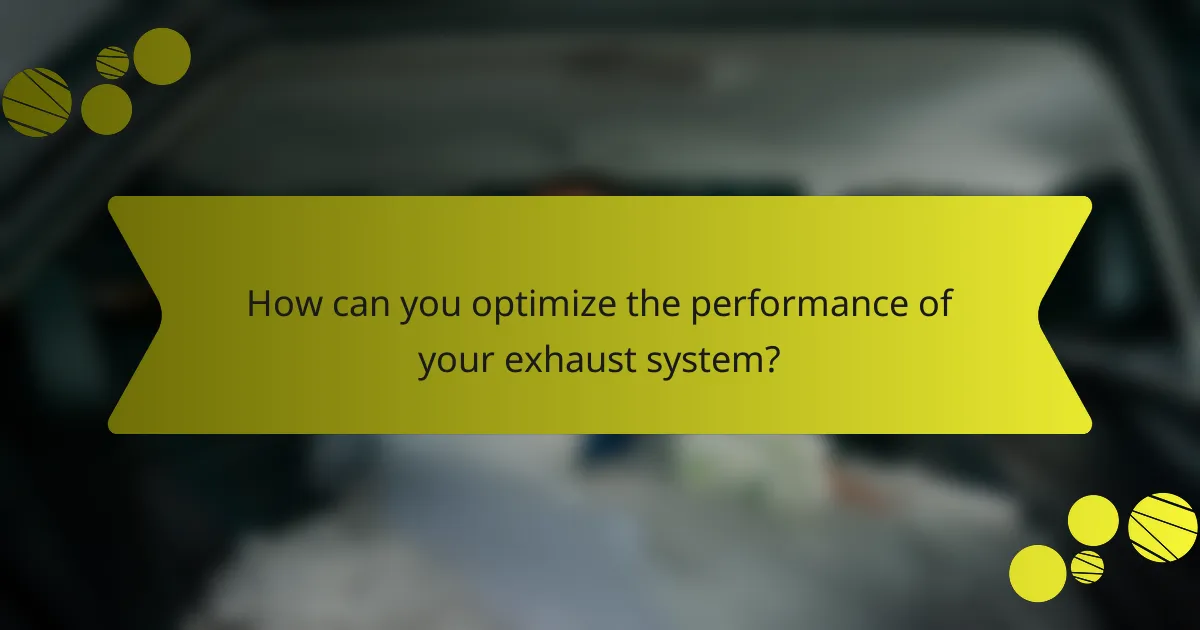
How can you optimize the performance of your exhaust system?
To optimize the performance of your exhaust system, focus on high-quality materials and proper installation techniques. Upgrading to a high-performance exhaust system can enhance sound, increase horsepower, and improve overall efficiency.
Consider the following tips:
1. Choose mandrel-bent tubing for smoother airflow.
2. Select a performance muffler to reduce back pressure.
3. Ensure proper fitment to avoid leaks and rattles.
4. Regularly inspect and maintain the system for optimal performance.
These steps can lead to significant power gains and a more aggressive sound profile.
What tuning options are available to enhance exhaust performance?
High-performance exhaust systems offer several tuning options to enhance exhaust performance, including header upgrades, cat-back systems, and tuning chips. These modifications can significantly improve sound, increase horsepower, and optimize engine efficiency.
1. Header upgrades improve exhaust flow by reducing back pressure.
2. Cat-back systems replace the exhaust piping from the catalytic converter to the rear, enhancing sound and performance.
3. Tuning chips recalibrate the engine’s computer for better fuel mapping and power delivery.
4. Performance mufflers alter sound characteristics and can reduce weight.
5. High-flow catalytic converters increase exhaust flow while maintaining emissions compliance.
6. Resonators can modify sound without significantly affecting performance.
Which aftermarket modifications complement exhaust upgrades?
Aftermarket modifications that complement exhaust upgrades include performance headers, high-flow catalytic converters, and tuning chips. These modifications enhance sound, increase power gains, and optimize engine performance. Performance headers improve exhaust flow, while high-flow catalytic converters reduce back pressure. Tuning chips adjust fuel mapping for better efficiency and power delivery.
What expert tips can help maximize the benefits of your exhaust system?
To maximize the benefits of your exhaust system, focus on quality components, proper installation, and regular maintenance. High-performance exhaust systems enhance sound and power, but their effectiveness relies on precise fitment and material durability. Use mandrel-bent pipes for optimal flow and consider tuning for your specific vehicle model. Regular checks for leaks and corrosion will ensure longevity and performance.
